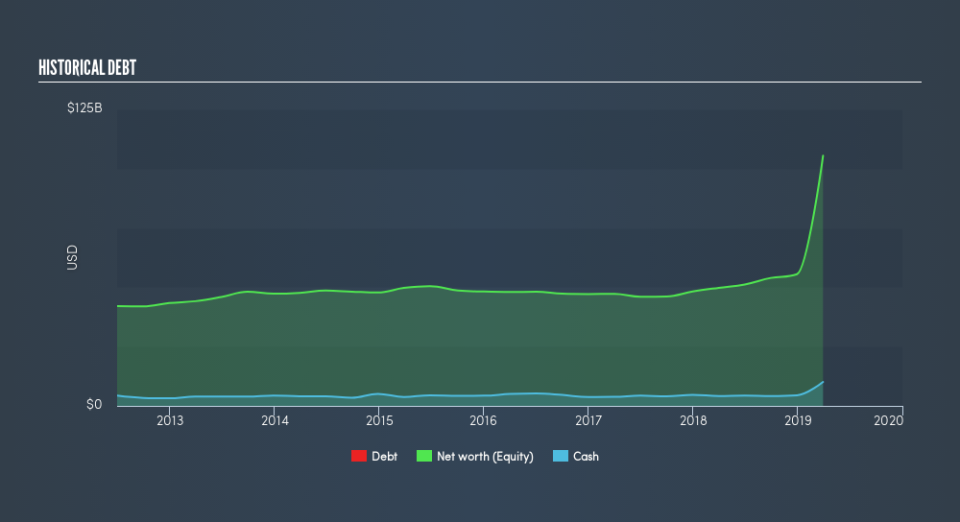What Investors Should Know About The Walt Disney Company's (NYSE:DIS) Financial Strength

Want to participate in a short research study? Help shape the future of investing tools and you could win a $250 gift card!
The Walt Disney Company (NYSE:DIS), a large-cap worth US$252b, comes to mind for investors seeking a strong and reliable stock investment. Market participants who are conscious of risk tend to search for large firms, attracted by the prospect of varied revenue sources and strong returns on capital. But, its financial health remains the key to continued success. This article will examine Walt Disney’s financial liquidity and debt levels to get an idea of whether the company can deal with cyclical downturns and maintain funds to accommodate strategic spending for future growth. Remember this is a very top-level look that focuses exclusively on financial health, so I recommend a deeper analysis into DIS here.
See our latest analysis for Walt Disney
Does DIS Produce Much Cash Relative To Its Debt?
Over the past year, DIS has ramped up its debt from US$25b to US$57b – this includes long-term debt. With this increase in debt, DIS's cash and short-term investments stands at US$10b to keep the business going. Moreover, DIS has generated US$14b in operating cash flow during the same period of time, leading to an operating cash to total debt ratio of 24%, meaning that DIS’s debt is appropriately covered by operating cash.
Does DIS’s liquid assets cover its short-term commitments?
Looking at DIS’s US$44b in current liabilities, it seems that the business may not have an easy time meeting these commitments with a current assets level of US$34b, leading to a current ratio of 0.77x. The current ratio is the number you get when you divide current assets by current liabilities.
Does DIS face the risk of succumbing to its debt-load?
With a debt-to-equity ratio of 54%, DIS can be considered as an above-average leveraged company. This is common amongst large-cap companies because debt can often be a less expensive alternative to equity due to tax deductibility of interest payments. Since large-caps are seen as safer than their smaller constituents, they tend to enjoy lower cost of capital. We can assess the sustainability of DIS’s debt levels to the test by looking at how well interest payments are covered by earnings. Net interest should be covered by earnings before interest and tax (EBIT) by at least three times to be safe. For DIS, the ratio of 25.05x suggests that interest is comfortably covered. It is considered a responsible and reassuring practice to maintain high interest coverage, which makes DIS and other large-cap investments thought to be safe.
Next Steps:
DIS’s cash flow coverage indicates it could improve its operating efficiency in order to meet demand for debt repayments should unforeseen events arise. Furthermore, its lack of liquidity raises questions over current asset management practices for the large-cap. I admit this is a fairly basic analysis for DIS's financial health. Other important fundamentals need to be considered alongside. You should continue to research Walt Disney to get a better picture of the stock by looking at:
Future Outlook: What are well-informed industry analysts predicting for DIS’s future growth? Take a look at our free research report of analyst consensus for DIS’s outlook.
Valuation: What is DIS worth today? Is the stock undervalued, even when its growth outlook is factored into its intrinsic value? The intrinsic value infographic in our free research report helps visualize whether DIS is currently mispriced by the market.
Other High-Performing Stocks: Are there other stocks that provide better prospects with proven track records? Explore our free list of these great stocks here.
We aim to bring you long-term focused research analysis driven by fundamental data. Note that our analysis may not factor in the latest price-sensitive company announcements or qualitative material.
If you spot an error that warrants correction, please contact the editor at editorial-team@simplywallst.com. This article by Simply Wall St is general in nature. It does not constitute a recommendation to buy or sell any stock, and does not take account of your objectives, or your financial situation. Simply Wall St has no position in the stocks mentioned. Thank you for reading.


